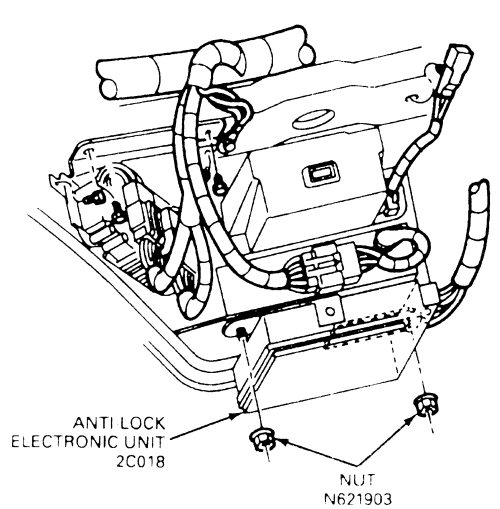- Joined
- November 11, 2005
- Messages
- 56,683
- Reaction score
- 1,186
- City, State
- Brooklyn, NY
- Year, Model & Trim Level
- 88 89 93 95 96 Aerostars
The Haynes repair manual # 10411 Automotive Anti-Lock Brake Systems Techbook explains various test procedure for testing the Kelsey-Hayes (Lucas Varity) systems in chapter 6. Here is a quote from page 6-5:
Page 6-6 has a list of fault codes:
Ford: Do not shut off the engine when retrieving codes or the code will be cleared. Locate the diagnostic connector (single-pin connector with a black/orange wire*) in the passenger compartment. Ground the connector for one second. When you're done reading the code, shut off the engine. This will clear the code.
*Note from Autozone's website: RABS I uses an orange/black wire, and RABS II uses a black/orange wire for the diagnostic connector.
Page 6-6 has a list of fault codes:
Codes-------------------------------------------------- Probable Cause
1 Not used.
2 Open isolation valve wiring or bad control module.
3 Open dump valve wiring or bad control module.
4 Closed RWAL valve switch.
5 More than 16 dump pulses generated in 4WD vehicles (disabled for 4WD).
6 Erratic speed sensor reading while rolling.
7 Electronic control module fuse pellet open, isolation output missing, or valve wiring shorted to ground.
8 Dump output missing or valve wiring shorted to ground.
9 Speed sensor wiring/resistance (usually high reading).
10 Speed sensor wiring/resistance (usually low reading).
11 Brake switch always on, RWAL light comes on when speed exceeds 40 MPH.
12 Not used.
13 Electronic control module phase lock loop failure.
14 Electronic control module program check failure.
15 Electronic control module RAM failure.
















